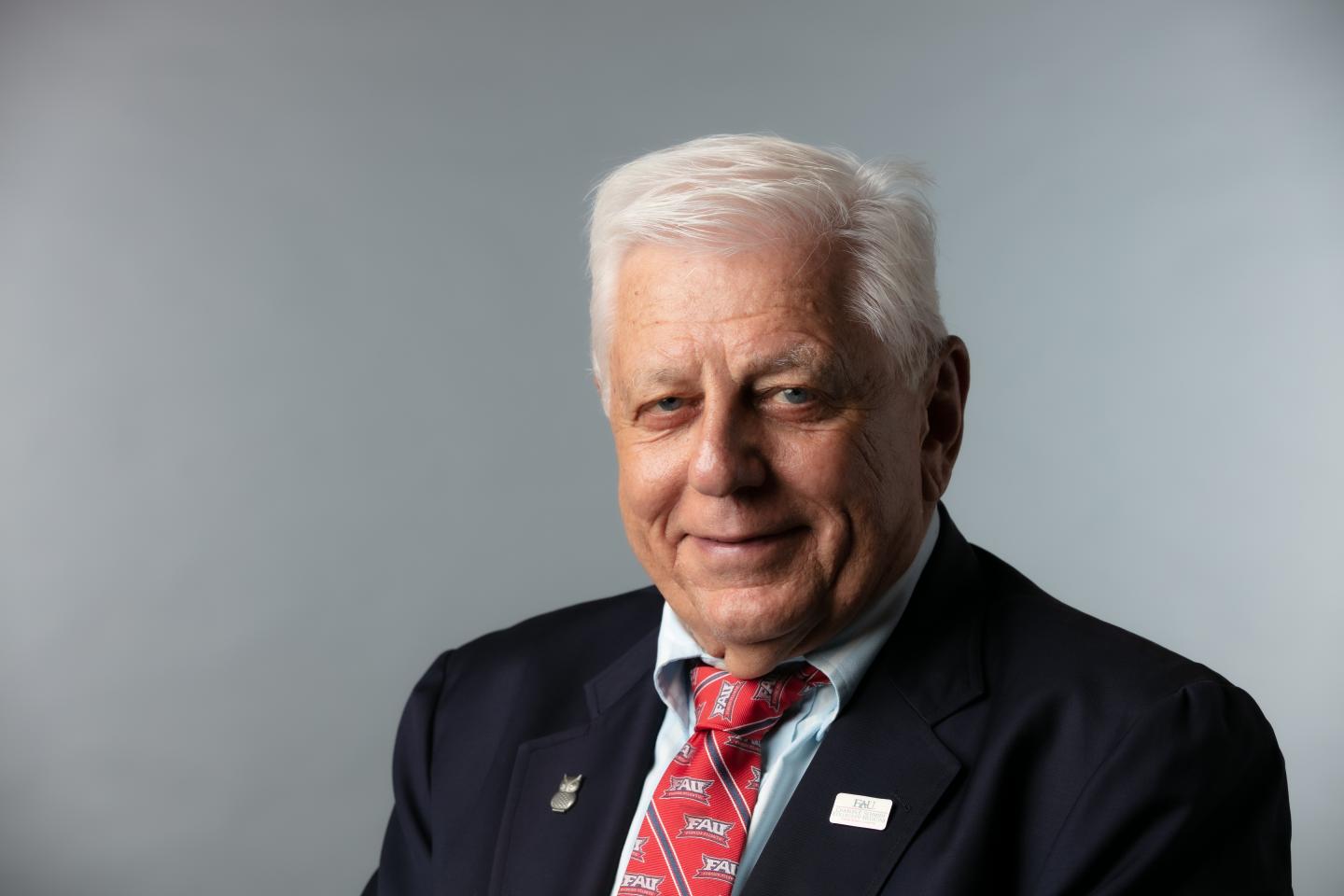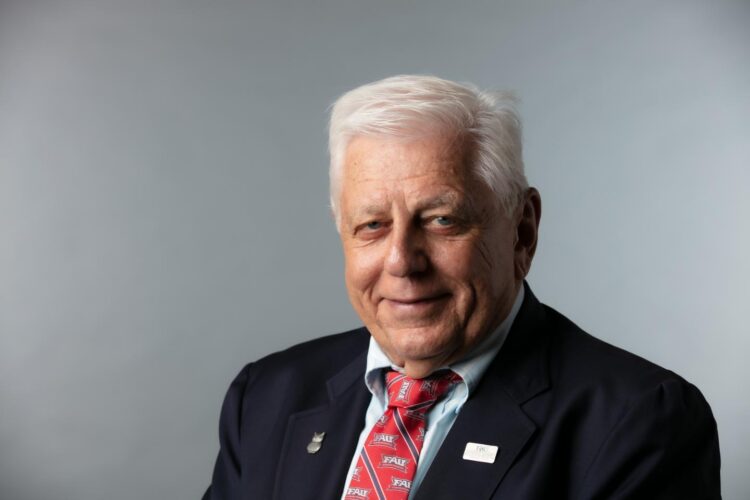
Credit: Alex Dolce, Florida Atlantic University
Smoking cigarettes causes 480,000 premature deaths each year in the United States, due mainly to a two-fold risk of cardiovascular disease and a 20-fold risk of lung cancer. Although smoking rates have declined dramatically, there are currently 35 million smokers in the U.S.
In a commentary published in the Ochsner Medical Journal, Charles H. Hennekens, M.D., Dr.PH, senior author, the First Sir Richard Doll Professor, and senior academic advisor in the Schmidt College of Medicine at Florida Atlantic University, and colleagues, highlight how failure to institute smoking cessation in hospitalized patients is a missed opportunity to avoid many premature deaths.
Each year in the U.S., approximately 30 million hospitalizations occur in individuals 18 and older. Of these, more than 7 million are current cigarette smokers whose average hospital stay is several days. The authors comment that starting smoking cessation therapy during hospitalization and maintaining high adherence post-discharge can markedly improve permanent quit rates in these patients with minimal to no side effects. Smoking cessation therapy also should include long-term counseling and at least 90 days of a prescription drug, in particular, varenicline, which works by blocking the pleasurable sensations of nicotine on the brain.
“Providing multifactorial intensive counseling interventions during and after hospitalization and initiating and maintaining adherence to drug therapy are all independent predictors of permanent smoking cessation rates,” said Hennekens. “All of these efforts have the potential to reduce many premature deaths from cigarette smoking, which remain alarmingly and unnecessarily high in the U.S. and has already become so worldwide.”
Quitting smoking reduces the risk of dying from cardiovascular disease beginning with a matter of months reaching that of lifelong non-smokers within a few years, even among older adults. In contrast, reductions in mortality risk from lung cancer only begin to appear several years after quitting, and even by 10 years, the risk is reduced to only approximately midway between continuing smokers and lifelong smokers. This is because the risks of cardiovascular disease relate to the numbers of cigarettes currently smoked and the risks of cancer to the duration of the habit.
The authors dedicated this manuscript to the memory of the late Edward D. Frohlich, M.D., Ph.D., who was the Alton Ochsner Distinguished Scientist at the Ochsner Clinic Foundation and a staff member of the Ochsner Clinic. The authors refer to Frohlich as a “great man and a good man” who was a valued mentor, colleague and friend. As a member of the Ochsner family for more than 40 years, Frohlich’s outstanding contributions helped to propel the Ochsner Clinic to a premier national and international research institution.
In recognition of his seminal discovery research on the hazards of cigarette smoking, Hennekens was the 29th recipient of the prestigious Alton Ochsner Award. Ochsner, a thoracic surgeon, and Michael DeBakey M.D., a future world-renowned cardiovascular surgeon, were early recipients of the award for their case series on smoking and lung cancer in the 1930s. Doll, a British physician, became the foremost epidemiologist of 20th century for pioneering epidemiologic studies, first with Sir Austin Bradford Hill and later with Sir Richard Peto – all who received the Alton Ochsner Award for their contributions to the enormous hazards of cigarette smoking.
From 1995 to 2005, Science Watch ranked Hennekens as the third most widely cited medical researcher in the world and five of the top 20 were his former trainees and/or fellows. In 2012, Science Heroes ranked Hennekens No. 81 in the history of the world for having saved more than 1.1 million lives. In 2016, he was ranked the No. 14 “Top Living Medical Scientist in the World.”
Based in part on Hennekens’ seminal work on the large clinical and public health hazards of smoking cigarettes, FAU President John Kelly adopted a university-wide tobacco free policy.
###
Co-authors are Roger L. Zoorob, M.D., M.P.H., professor and chair, Department of Family and Community Medicine, Baylor College of Medicine; and Robert S. Levine, M.D., a professor of family and community medicine, Baylor College of Medicine and an affiliate professor in FAU’s Schmidt College of Medicine.
About the Charles E. Schmidt College of Medicine:
FAU’s Charles E. Schmidt College of Medicine is one of approximately 155 accredited medical schools in the U.S. The college was launched in 2010, when the Florida Board of Governors made a landmark decision authorizing FAU to award the M.D. degree. After receiving approval from the Florida legislature and the governor, it became the 134th allopathic medical school in North America. With more than 70 full and part-time faculty and more than 1,300 affiliate faculty, the college matriculates 64 medical students each year and has been nationally recognized for its innovative curriculum. To further FAU’s commitment to increase much needed medical residency positions in Palm Beach County and to ensure that the region will continue to have an adequate and well-trained physician workforce, the FAU Charles E. Schmidt College of Medicine Consortium for Graduate Medical Education (GME) was formed in fall 2011 with five leading hospitals in Palm Beach County. The Consortium currently has five Accreditation Council for Graduate Medical Education (ACGME) accredited residencies including internal medicine, surgery, emergency medicine, psychiatry, and neurology.
About Florida Atlantic University:
Florida Atlantic University, established in 1961, officially opened its doors in 1964 as the fifth public university in Florida. Today, the University serves more than 30,000 undergraduate and graduate students across six campuses located along the southeast Florida coast. In recent years, the University has doubled its research expenditures and outpaced its peers in student achievement rates. Through the coexistence of access and excellence, FAU embodies an innovative model where traditional achievement gaps vanish. FAU is designated a Hispanic-serving institution, ranked as a top public university by U.S. News & World Report and a High Research Activity institution by the Carnegie Foundation for the Advancement of Teaching. For more information, visit http://www.
Media Contact
Gisele Galoustian
[email protected]
Related Journal Article
http://dx.





